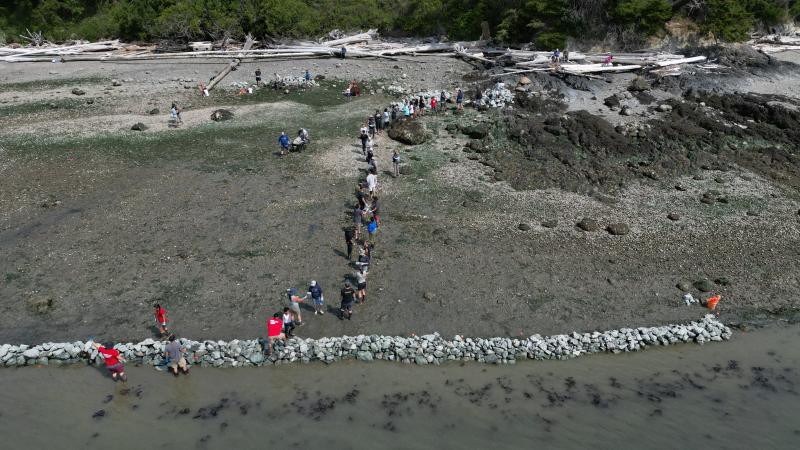Swinomish Clam Garden to Bolster Littleneck Clam Populations
Posted
Last Updated
Reviving a 3,500-year-old indigenous mariculture practice with funding from NOAA.
First Modern Clam Garden
The Swinomish Tribe and other Coast Salish Indigenous peoples hold a rich history of practicing shellfish mariculture in Alaskan and Washington waters.
For more than 3,500 years, native communities created clam gardens by constructing a rock wall in the intertidal zone, the land between high and low tides, and actively tending the beach. Over time their practices not only increased shellfish production, but also expanded clam habitat and increased species diversity, according to a study of ancient clam gardens.
The project is funded through NOAA Fisheries’ Saltonstall-Kennedy Grants Program and the Northwest Climate Adaptation Science Center.
This new clam garden will revive ancient practices that further connect the Swinomish to their land and sea. “We have maintained our relationships with this territory since time immemorial—relationships with the land, the water, the sea, and everything that lives along with us. We are thankful to receive this funding that will enable us to continue to work with the land and the water as we restore our ancient practices,” says Steve Edwards, Chairman and member of the Swinomish Indian Tribal Community.
Due to influences such as colonialism and shoreline development that have displaced native communities, traditional clam gardens have fallen fallow. The Tribe’s Fisheries Department and Community Environmental Health Program collaborated with Washington Sea Grant to work with Indigenous knowledge-holders in the community and clam garden researchers. They began identifying ecological and socio-cultural benefits in future garden sites. These include teaching traditional cultural practices and carrying on ceremonial subsistence harvesting practices to younger generations, as well as creating climate resilient food sources.
Read more at fisheries.noaa.gov


